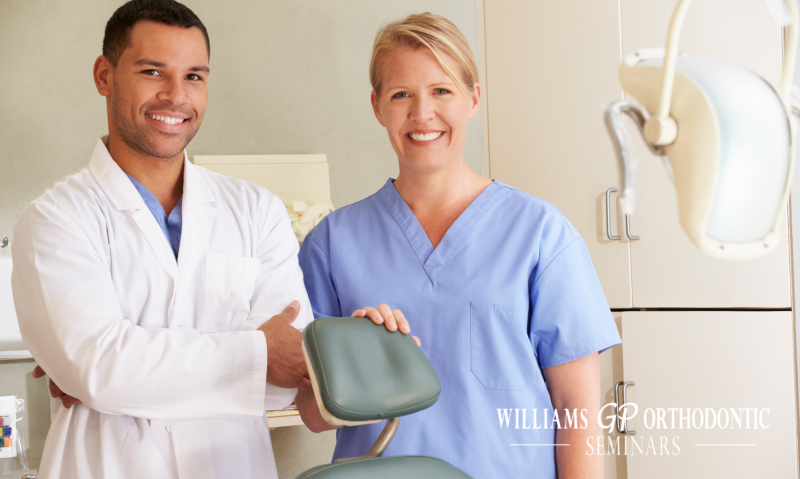Your Team’s Role in Offering Orthodontics
A successful dental practice is one that runs efficiently and has all team members on board and educated about every treatment they offer. Imagine walking into a dental practice to get a dental implant and no one on the team has knowledge of the treatment or terminology. It would probably be a huge turnoff considering implants are a major financial and dental commitment. The same goes with orthodontic knowledge. If you are considering adding orthodontics to your practice, you need your assistants and hygienists to be familiar with everyday orthodontic knowledge and take a GP orthodontic assistant course.
Orthodontics is a specialty that provides a lot of benefits for the patient, including straightening the smile, preventing long-term jaw problems, and correcting crowding or cosmetic concerns. But it’s also a major financial investment, which is why patients typically do their homework when it comes to signing such an expensive treatment plan.
Whether you want to maintain the trust and loyalty of an existing patient or have a new patient inquiring about orthodontic services, you want your office to look professional and prepared when it comes to orthodontics.
Benefits of Training Your Team in Orthodontics
One of the best ways you can demonstrate professionalism and competency is having a team that is up to date about orthodontics. This way when a patient wants to discuss a question or concern, you have team members who can answer those questions or troubleshoot an issue that you may not be available for.
Your patients will appreciate going to an office where every team member is well versed in the field, rather than going to an office that seems ill-prepared and untrained. The orthodontic course for dental hygienists and assistants is taught by Susan Coffey, RDA, who has years of experience training general and pediatric teams.
A cross-trained team will save you time and money overall because diagnostic record-taking and photographs can be time-consuming. You also need a team that can see multiple patients at once during routine monthly visits, so understanding banding and bracket and wire removal is essential. When your team can see monthly visits, you’ll have more time for consultations and high-paying procedures.
Taking an Orthodontic Assistant Course
Williams GP Orthodontic Seminars offers an Orthodontic Assistant Training Course for team members who are interested in cross-training and learning about the field of orthodontics. It is a great opportunity for hygienists and assistants looking to specialize in orthodontics and improve their techniques and skills.
Assistants and hygienists will appreciate that you want to increase their skill set and give them additional training, which often correlates to higher compensation. Dentists rave about Williams GP Orthodontic Seminars courses because they understand the needs for a general and pediatric dental orthodontic practice and train accordingly. This training guides those who work in traditional practices and helps dentists incorporate orthodontics as a specialty into the practice.
The weekend course is designed for those with little to no orthodontic background and gives team members an education in:
- Phase I (early treatment): This focuses on younger patients who need early treatment to avoid long-term dental problems, including expansion and limited braces. It will help correct early jaw problems and avoid problems like impacted teeth and bite issues.
- Phase II (Class I and Class II treatment): Phase II is comprehensive treatment for patients who want to correct their smiles for either functional or cosmetic reasons.
- Bracketing and wire placement: Assistants and hygienists will learn the basics of placing brackets in the correct locations and assisting with wire placement.
- Working with and understanding diagnostic records: Diagnostics is the first step of any case and is a necessary component that the assistant is typically responsible for.
- Taking and understanding orthodontic photographs: Intraoral photographs allow the dentist to visualize bite problems and treatment progress. They also allow patients to see their progress.
- Retention: Retention using fixed or removable retainers is an integral part of treatment and often considered the final phase of orthodontic treatment. Without it, results can relapse, and patients will certainly be unhappy.
Getting Started
The Orthodontic Assistant Training Course is beneficial for the team, patients, and dentist. A dentist cannot work alone and needs a team that is highly trained and well versed in orthodontics if they want to see major results in production. Unless a dentist plans to do each step of orthodontics themselves, which is unlikely, it is worth the investment to train each of your team members in orthodontics. Check out more on this popular course here.

